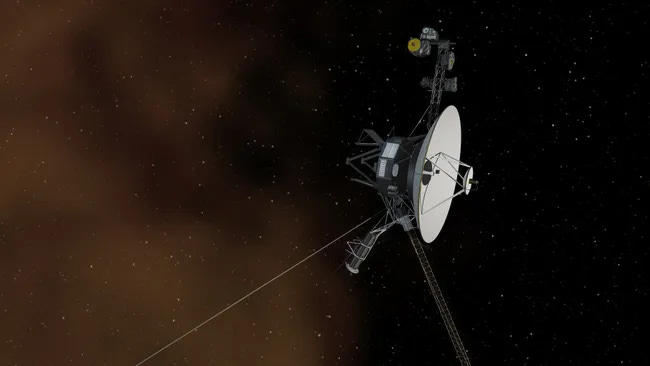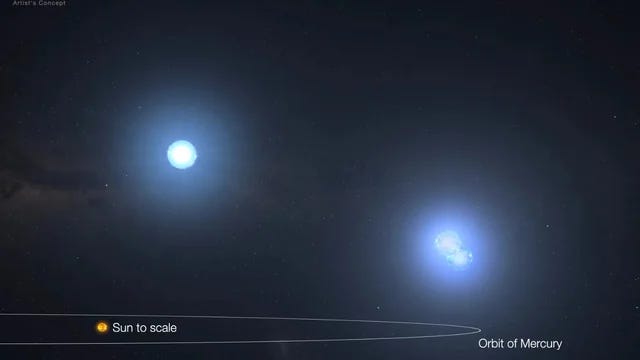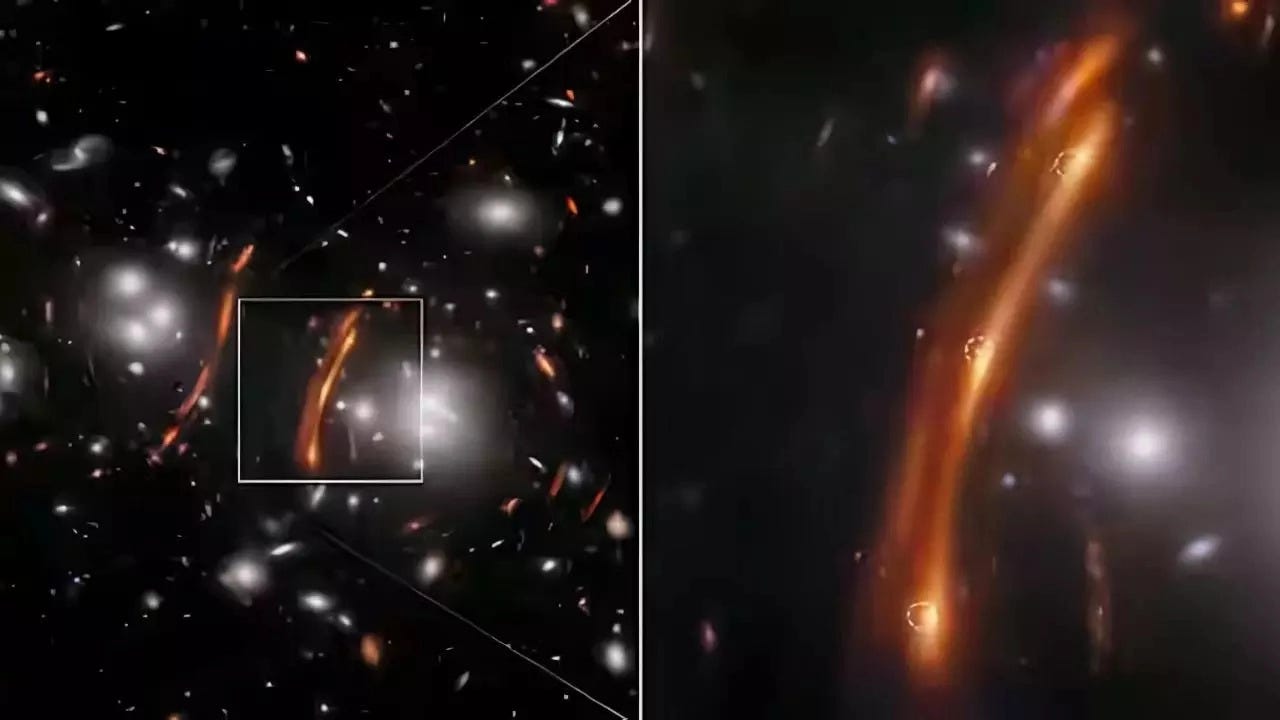Weekly - Supernova mysteriously appears 3 times in same image and more
🟡 Weekly Space News - Quick and Easy.
This week’s post ranks yellow 🟡 on the Engagement Palette.
NASA shuts down Voyager-1 instrument to save power
The Voyager-1 spacecraft was launched in 1977 to explore space beyond our solar system. It only left the solar system in 2012 and has been travelling through interstellar space ever since. Voyager-1 is powered by heat from a decaying radioactive isotope, which initially generated 470 watts of power. However, this has been decreasing every year. Most of the power isn't used to move the spacecraft but to operate its scientific instruments. Originally, it had 10 instruments, but over the years, 6 have been shut down. The 7th one was turned off recently.
Scientists find 3 stars orbiting each other
Scientists using the Transiting Exoplanet Survey Satellite (TESS) exoplanet detector, recently discovered a rare kind of star system where there are 3 stars orbiting each other. Of the 3, 2 stars circle each other and one star orbits the whole pair every 33 Earth days. While this arrangement by itself is quite unique, the reason scientists are so excited about this is that this star system has the tightest 3-star orbit we have ever discovered. All 3 stars in their orbits, could easily fit in the space between the sun and Mercury.
Supernova mysteriously appears 3 times in same image by Webb
A supernova is a massive explosion of a star at the end of its life. Recently, an image captured by the James Webb telescope came to the attention of scientists as the same supernova was seen 3 times in the same image in different positions. This was not however caused by a bug in the telescope, but was actually due to a natural phenomenon called gravitational lensing which causes massive objects like blackholes, galaxies and stars to bend light coming from their surroundings due to gravity. The light coming from this particular supernova had been bent by a nearby galaxy cluster, causing it to appear 3 times in the same image.





